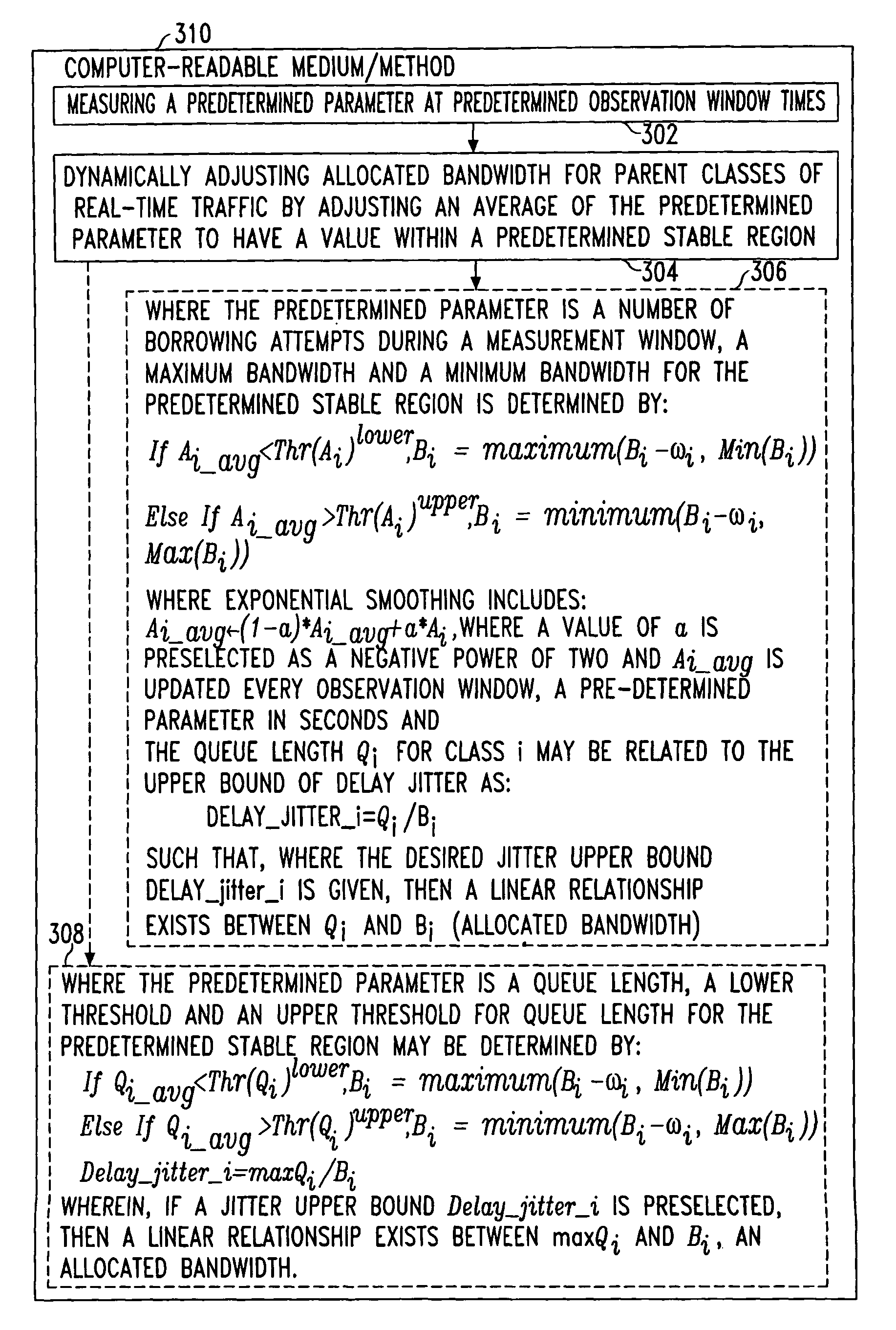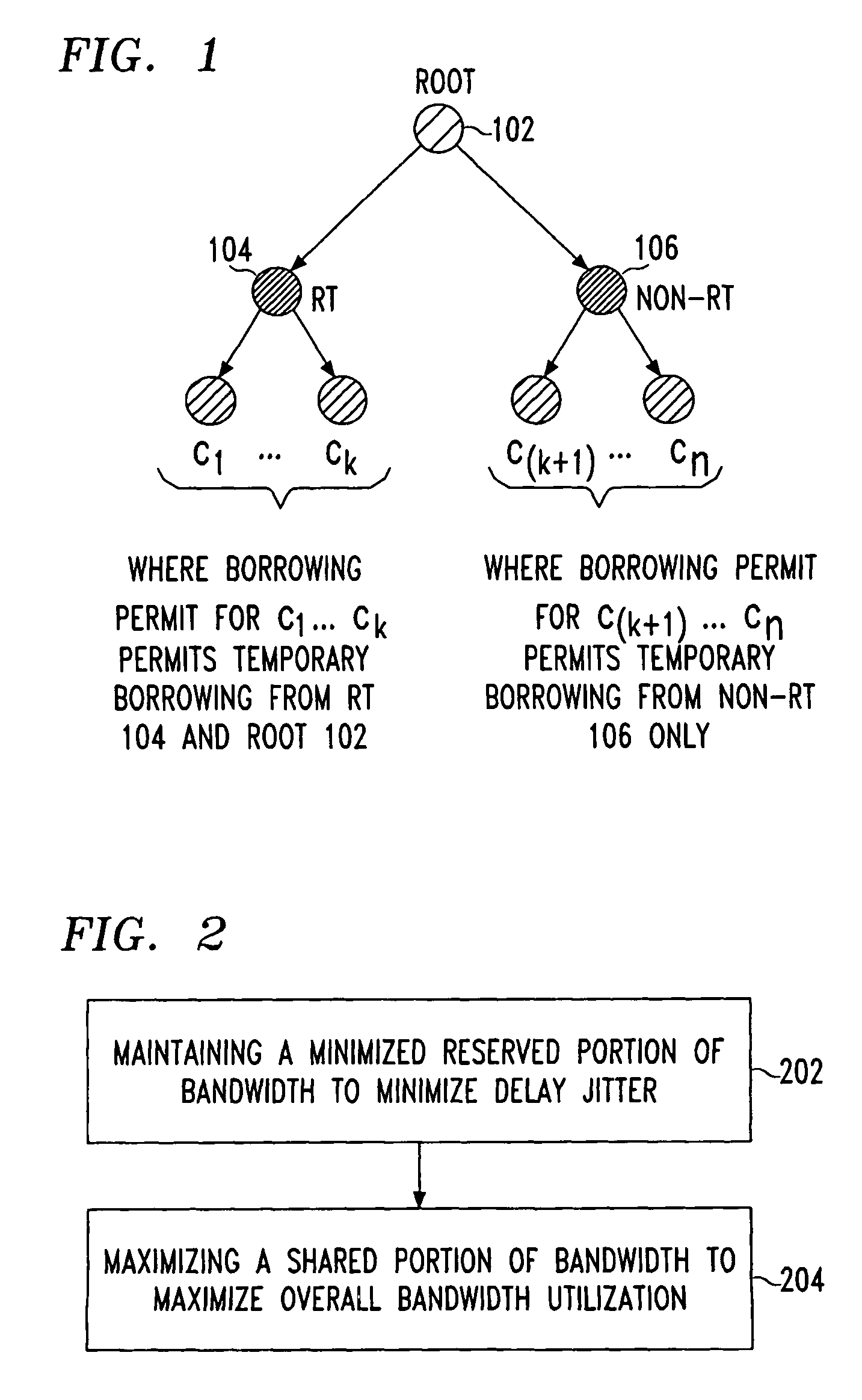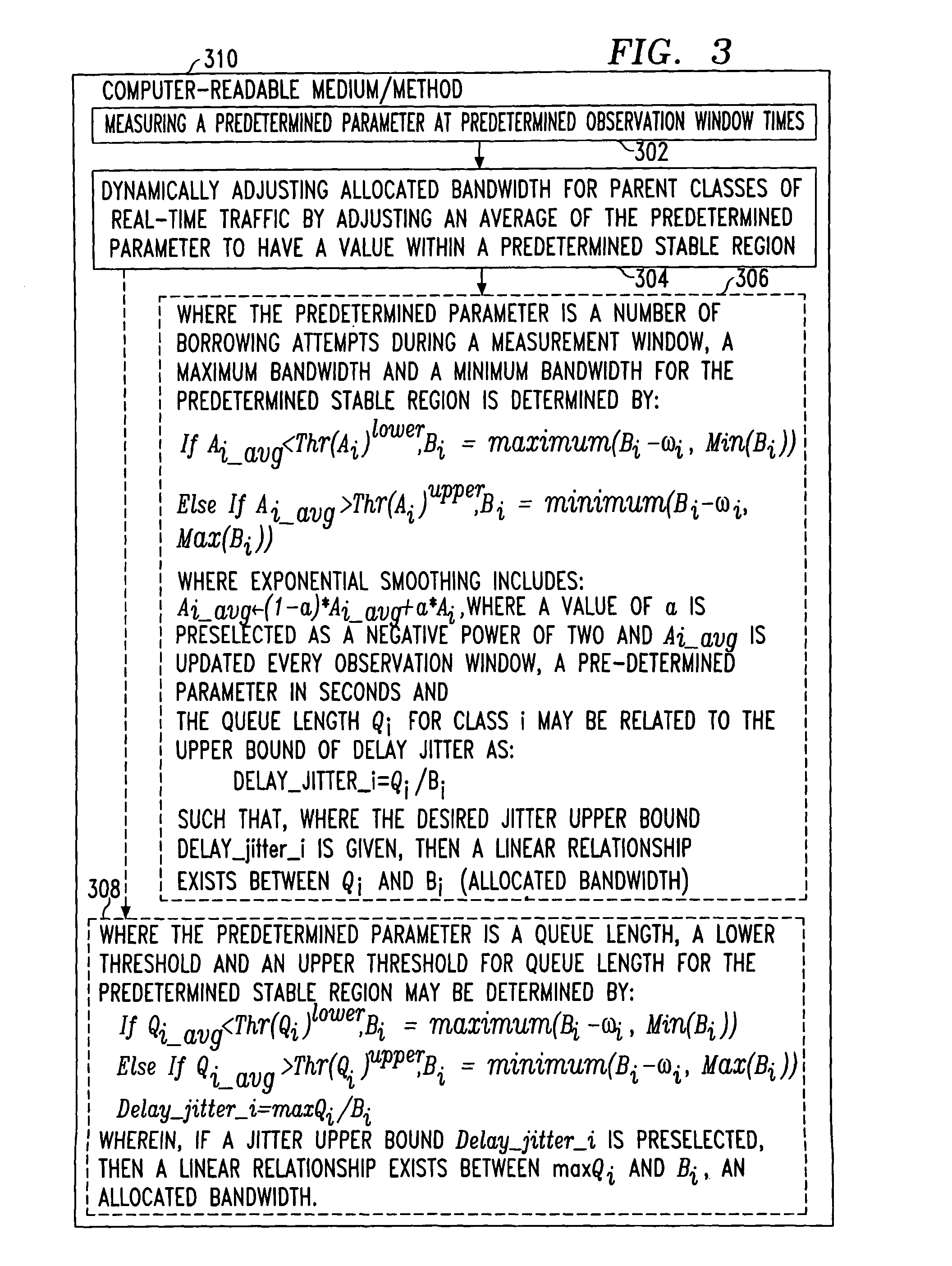Method and device for efficient bandwidth management
a bandwidth management and bandwidth technology, applied in the field of bandwidth management, to achieve the effect of maximizing a shared portion of bandwidth, minimizing delay jitter, and minimizing reserved bandwidth
- Summary
- Abstract
- Description
- Claims
- Application Information
AI Technical Summary
Benefits of technology
Problems solved by technology
Method used
Image
Examples
Embodiment Construction
[0029]In previous implementations, classes with heavy-volume traffic tended to dominate the bandwidth for a relatively long period of time and cause a high delay jitter for classes with light traffic volume even if the latter were allocated sufficient bandwidth. Since the traffic volume of some real-time applications, e.g., voice, is relatively low and the bandwidth consumption of such applications is more predictable, it is desirable to separate these applications from the rest of the traffic, which includes many data applications with unpredictable volume and bursty bandwidth consumption. However, while total separation provides security, it also reduces the total utilization of bandwidth. One alternative is to allow voice traffic to borrow bandwidth from data traffic, but not allow data to borrow from voice. In this situation, one wants to reserve sufficient bandwidth for voice and, at the same time, avoid over-engineering in order to increase the bandwidth utilization.
[0030]Due ...
PUM
 Login to View More
Login to View More Abstract
Description
Claims
Application Information
 Login to View More
Login to View More - R&D
- Intellectual Property
- Life Sciences
- Materials
- Tech Scout
- Unparalleled Data Quality
- Higher Quality Content
- 60% Fewer Hallucinations
Browse by: Latest US Patents, China's latest patents, Technical Efficacy Thesaurus, Application Domain, Technology Topic, Popular Technical Reports.
© 2025 PatSnap. All rights reserved.Legal|Privacy policy|Modern Slavery Act Transparency Statement|Sitemap|About US| Contact US: help@patsnap.com



